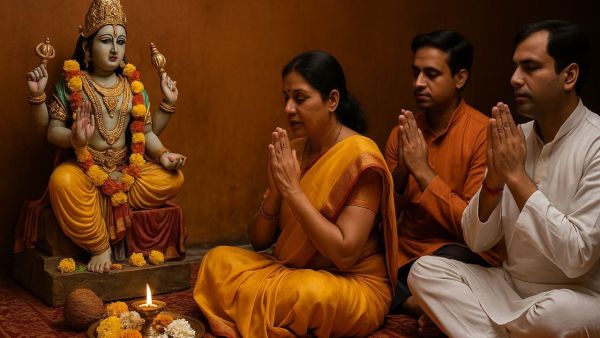
Mumbai: Nirjala Ekadashi is regarded as one of the most sacred and spiritually powerful fasting days in the Hindu calendar. Falling during the Shukla Paksha (waxing phase of the moon) in the month of Jyeshtha, it holds immense religious importance, especially for devotees of Lord Vishnu. This particular Ekadashi is also known as Bhimseni Ekadashi and is considered the most rigorous of all twenty-four Ekadashis observed throughout the year, as it involves a complete fast without food and water—hence the name Nirjala, meaning “without water.”
According to Hindu beliefs, observing Nirjala Ekadashi with devotion is said to cleanse all sins, bring prosperity, and ensure spiritual growth. It is also believed to grant longevity and moksha (liberation from the cycle of birth and death). For those unable to observe other Ekadashis throughout the year, keeping this single fast is believed to bring the combined merits of all the others. Here’s all you need to know about Nirjala Ekadashi 2025, including its date, timings, and spiritual benefits.
As per the Hindu Panchang (calendar), Nirjala Ekadashi in 2025 will be observed on Friday, 6 June. The Ekadashi tithi will begin at 2:15 AM on 6 June and end at 4:47 AM on 7 June. Devotees will observe the fast on 6 June, while the fast-breaking or Parana will take place on Saturday, 7 June, during the Dwadashi tithi.
Nirjala Ekadashi is believed to be the most rewarding of all Ekadashis. Fasting on this day is said to purify the soul, destroy all past sins, and attract divine blessings from Lord Vishnu. Devotees also believe that observing this vrat leads to liberation after death and strengthens one’s spiritual journey.
Charity is highly recommended on Nirjala Ekadashi. Donating food, water, and wealth to the needy is thought to bring material abundance and keep one’s finances stable. Many also consider it an ideal day to perform acts of kindness, spiritual reflection, and meditation.
(Disclaimer: The information provided is based on traditional beliefs and religious texts. News9 Live does not independently verify the religious significance of these rituals.)